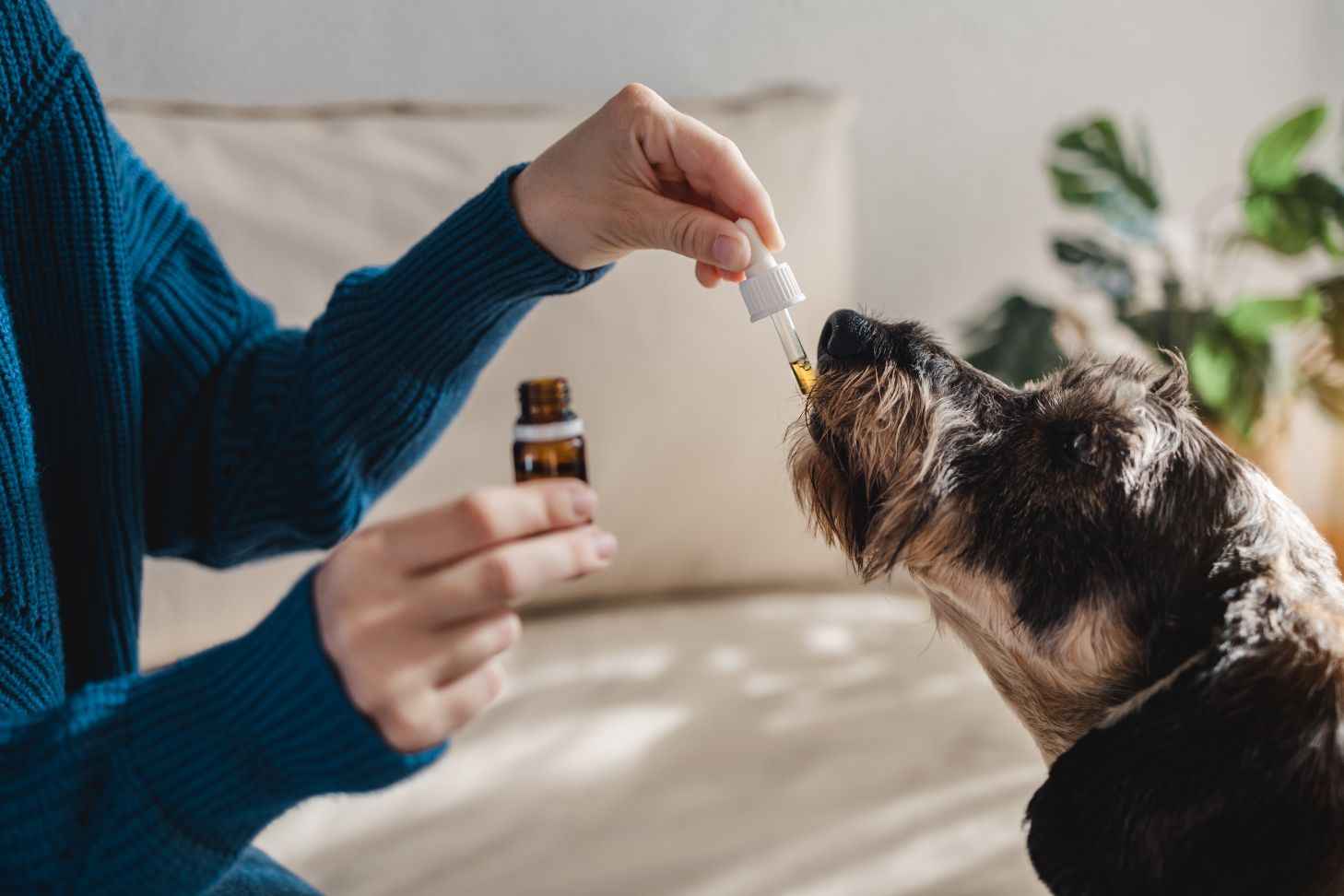Table of Contents
Olive oil needs no introduction. At least not in the health and wellness industry.
Besides its wide range of culinary applications, olive oil has also been used for hundreds of years to relieve numerous common ailments. It turns out that the oil might offer several therapeutic benefits to our canine friends too.
This post looks at some amazing benefits and hidden risks of olive oil for dogs.
Health Benefits of Olive Oil for Dogs
1. Olive Oil Can Nourish Your Dog’s Coat
Olive oil is rich in omega-3 fatty acids, compounds noted for their powerful antioxidant, anti-inflammatory, and moisturizing benefits.
Feeding your dog olive oil can help improve his coat’s radiance while also guarding against tumors and other inflammatory skin conditions.
2. Olive Oil Can Promote Weight Loss
The word ‘oil’ in olive oil resonates with weight gain. Interestingly, olive oil is more likely to promote weight loss than induce weight gain. That’s due to its abundance of monounsaturated fats.
Studies have shown that monounsaturated fats can break down adipose and visceral fat. This can, in turn, lower cholesterol levels and overall weight.
3. Olive Oil Can Improve Your Dog’s Appetite
Inappetence is a common problem in dogs. It usually results from an underlying medical condition.
However, numerous other factors could cause your dog to lose his appetite. They include pain from injury, stress and boredom, and chronic dehydration.
It turns out that administering olive oil might improve your dog’s appetite by stimulating his response to food. That’s due to the oil’s ability to alter the taste and consistency of your dog’s everyday food.
Just remember to serve olive oil to your dog in moderation. While you want to restore your dog’s interest in his food, a voracious appetite could lead to unintentional weight gain.
4. Olive Oil Can Relieve Constipation
Olive oil is a natural laxative. The oil can stimulate your dog’s digestive system and promote better stool consistency, thereby relieving indigestion.
However, it’s important to administer the oil in moderation to prevent excessive vomiting and diarrhea.
5. Olive Oil Can Boost Your Dog’s Immunity
One of the primary reasons olive oil enjoys timeless popularity is its antioxidant properties.
As already indicated, omega-3 fatty acids are one of the main antioxidants in olive oil. However, the oil teems with other antioxidants, such as vitamin E and phytonutrients. These compounds can boost your dog’s immunity by reducing the oxidative stress to cells caused by the over-accumulation of free radicals in the body.
Vitamin E, in particular, is linked to enhanced cellular functions and reduced risks of cardiovascular and neurodegenerative diseases. The vitamin may also prevent cognitive decline while improving your dog’s respiratory health. That makes it highly beneficial for brachycephalic breeds like Shih Tzus and bulldogs.
Potential Dangers of Olive Oil for Dogs
a) Olive Oil May Cause Unwanted Weight Gain
Olive oil may be loaded with monounsaturated fats, which promote lean weight. However, the substance is also high in other types of fat associated with unhealthy weight gain.
The good news is that your dog will need to consume olive oil excessively and on a regular basis to suffer its adverse effects on weight.
b) Olive Oil May Trigger Gastric Irritation
Olive oil has laxative effects. Again, this can be a blessing or a curse depending on the quantity of olive oil that you give to your dog.
Moderate amounts of olive oil might treat constipation and indigestion in dogs. But too much of it can irritate your dog’s stomach, resulting in gastrointestinal symptoms like vomiting and diarrhea.
c) Olive Oil May Cause Allergic Reactions
There’s a good chance that your dog might develop allergic reactions from consuming olive oil. That’s especially if introducing this compound to your pooch for the first time.
Olive oil allergy in dogs can produce diverse symptoms, ranging from gastrointestinal issues to respiratory problems. Depending on the nature of exposure, your dog may also suffer contact dermatitis.
What Is The Best Way To Give Olive Oil To Dogs?
Since olive oil can provide immense therapeutic benefits for the skin, it’s intuitive to apply the oil externally to dogs. However, experts strongly discourage that.
If administered topically, olive oil can easily penetrate your dog’s pores and combine with his natural skin secretions. These interactions can produce a host of adverse dermatological effects, including skin rash, itchiness, soreness, and inflammation. Besides, the reactions between olive oil and your dog’s secretions might produce unpleasant odors.
The best way to give olive oil to dogs is orally. You can administer the oil sublingually (underneath the tongue) or mix it into your dog’s food.
In addition to choosing the right delivery method, it’s also important to practice moderation when it comes to olive oil for dogs.
A teaspoon of olive oil is sufficient for a dog between 20 and 50 pounds. If your pooch is 90 pounds or more, you can go for a tablespoon. Either way, avoid giving your dog olive oil every day. The product should only be served occasionally and only as a treat.
Last but not least, insist on extra virgin olive oil as it’s lower in acidity. And if buying the product from your local store, ensure it’s free from additives known to be toxic to dogs, such as spices and seasoning.
Final Word
Olive oil may provide tons of benefits to dogs. But there are also dangers to beware of.
We hope you can refer to this article as a guide the next time you’re planning to give your pooch an olive oil treat.




